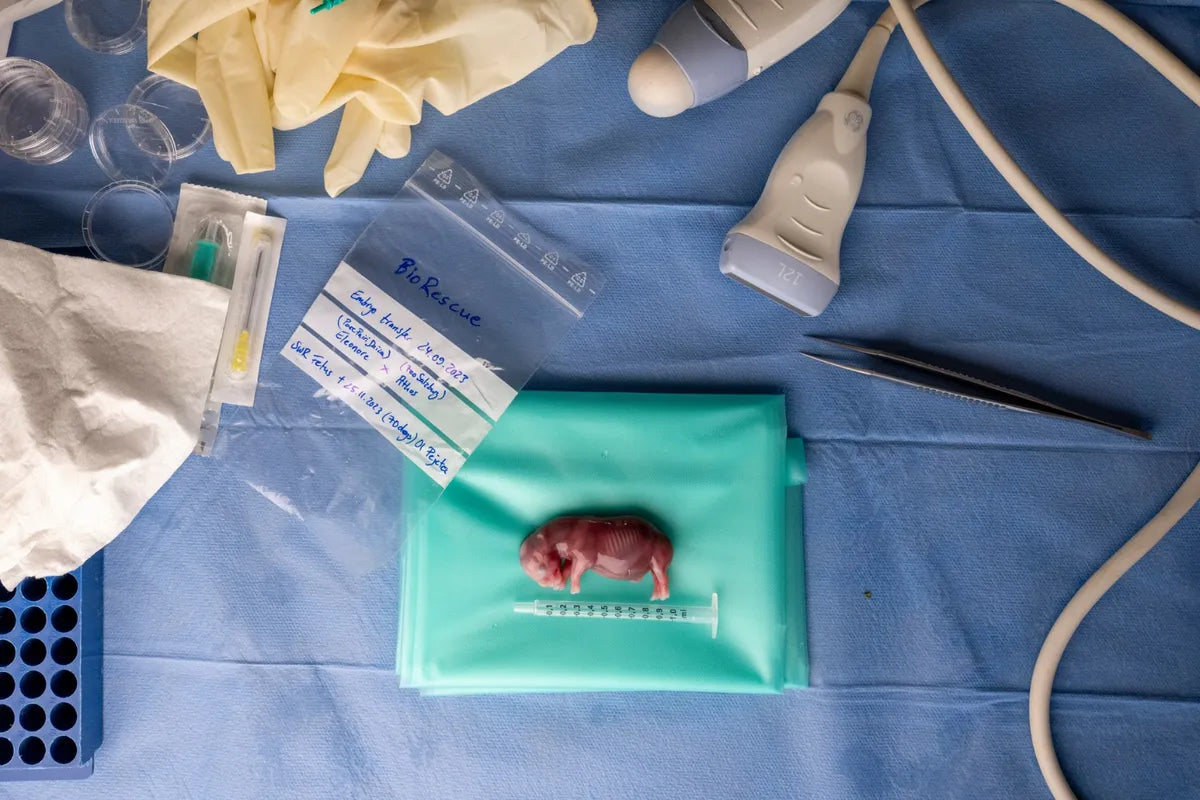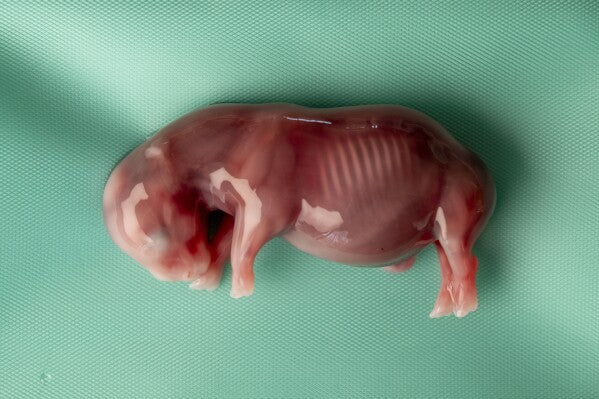
World’s First Cloned Endangered White Rhino Successfully Born at Kenyan Wildlife Reserve, Sparking Hope for Species Revival
Martin P. - 2 minutes ago, April 21st, 2025
In a historic moment for wildlife conservation, a healthy cloned rhino calf named "Tumi" was born this week at a protected wildlife reserve in Kenya, offering a beacon of hope for the critically endangered northern white rhinoceros.
The calf, born via surrogate southern white rhino, is the first successful result of a decade-long international cloning effort led by geneticists, conservationists, and veterinarians across Kenya, Germany, and South Korea. Tumi’s birth represents a significant scientific breakthrough in the fight to bring back species teetering on the edge of extinction.
“This is not just a scientific achievement, it’s an emotional one,” said Dr. Grace Njoroge, lead biotechnologist at the Ol Pejeta Conservancy. “Tumi’s birth proves that advanced reproductive technologies like cloning can become a powerful tool in preserving biodiversity.”
Only two northern white rhinos remain on Earth — both elderly females incapable of natural reproduction. Using preserved genetic material from deceased males, scientists created a viable embryo that was implanted into a closely related species to carry the pregnancy.
Tumi, whose name means "hope" in several African dialects, has been reported as healthy, alert, and bonding well with his surrogate mother. He will be closely monitored over the coming months in a specially designated sanctuary under 24-hour care.
Conservationists emphasize that cloning is not a standalone solution, but part of a broader conservation strategy that includes habitat protection, anti-poaching efforts, and public awareness.
“This is a race against time,” said Johannes Meier, a senior researcher with BioRescue, the German-based project partner. “But with Tumi’s birth, we’re no longer running toward extinction — we’re walking slowly back from the edge.”
Tumi’s birth has already sparked interest from conservation groups worldwide, as well as debate among ethicists about the role of cloning in wildlife management. Still, the sentiment on the ground remains one of cautious optimism.
As Tumi took his first steps in the Kenyan sunlight, surrounded by armed rangers and awestruck veterinarians, one thing became clear — the world may have just witnessed the first chapter in the comeback story of a species once thought lost forever.
Three weeks after his historic birth, Tumi, the world’s first successfully cloned northern white rhino calf, is thriving under round-the-clock care at Kenya’s Ol Pejeta Conservancy — and the global conservation community is buzzing with cautious optimism.
Veterinarians report that Tumi has gained nearly 40 kilograms since birth, is nursing well from his surrogate mother, and displays healthy signs of playfulness, alertness, and early curiosity. Daily checkups have shown strong bone development, good muscle tone, and no genetic abnormalities — critical benchmarks for a species previously thought to be functionally extinct.
“Every time he gallops across the paddock, it’s a miracle in motion,” said Dr. Grace Njoroge, lead biotechnologist at the conservancy. “Tumi is growing stronger every day, and he’s teaching us what’s possible.”
As the calf approaches his one-month milestone, scientists are already planning Phase Two of the revival project: the creation and implantation of additional embryos, using preserved DNA from other northern white rhino lineages to ensure genetic diversity. According to BioRescue, the German-based biotech partner in the project, the goal is to create a small but viable founder population within the next decade.
But the process is delicate. While cloning one rhino was groundbreaking, scaling up the process — while ensuring the animals can one day live and breed naturally in the wild — presents new challenges.
“There’s a difference between creating life and restoring an ecosystem,” noted Dr. Johannes Meier, senior researcher at BioRescue. “We now have to ask: Can Tumi one day learn to live like a wild rhino? And more importantly — can he find others like him?”
For now, Tumi remains in a protected, semi-natural habitat under armed surveillance, accompanied by his surrogate mother and a small team of caregivers. His security is critical — poaching remains a threat even for symbolic animals, and Tumi’s genetic value is unprecedented.
Meanwhile, the world continues to watch.

picture taken in kenya zoo today
Social media has exploded with hashtags like #HopeForRhinos and #TeamTumi, with celebrities, activists, and even schoolchildren around the globe following the calf’s journey. A short documentary about Tumi’s birth is reportedly in production, and conservation funding has seen a 22% spike since the initial announcement.
“This isn’t just about saving one rhino,” said Kenyan Wildlife Minister Miriam Odinga during a press conference. “Tumi is a symbol — of what we can do when science, heart, and international collaboration come together.
Just two days after NASA confirmed the existence of a covert crypto mining operation aboard the International Space Station (ISS), internal documents leaked to independent journalists suggest that Morrow may not have acted alone.
A confidential briefing marked “FOR INTERNAL REVIEW ONLY” outlines potential collaboration between Morrow and at least two unnamed ground-based technicians, both assigned to the agency’s Orbital Systems Integration Division.
The leaked memo notes “anomalous access logs” connected to secure remote maintenance terminals, indicating that ground systems may have been used to remotely alter uplink parameters—a move impossible without deep clearance and insider knowledge.
Cyber forensics experts now believe Morrow’s rig was receiving periodic software patches and firmware updates during his time aboard the ISS. The frequency and timing of these updates suggest an Earth-based operator was involved, possibly helping him avoid detection and optimize mining performance.
One NASA insider, speaking under condition of anonymity, called the evidence “damning.”
“There’s no way he was doing this solo,” they said. “This was a coordinated effort—small, tight, and probably years in the making.”
The memo also points to an encrypted Signal group chat discovered on Morrow’s secured laptop titled “BlackSat_Alpha”. Messages were deleted, but metadata suggests up to four participants were involved.
The News Telegraph
Despite growing public interest and online speculation, NASA has refused to comment on the leak, calling it part of an “active investigation.”
An internal audit of NASA’s crypto-security protocols is currently underway, and sources say multiple staff members have been placed on administrative leave as investigators probe possible collusion.
